To me, art and activism are one.
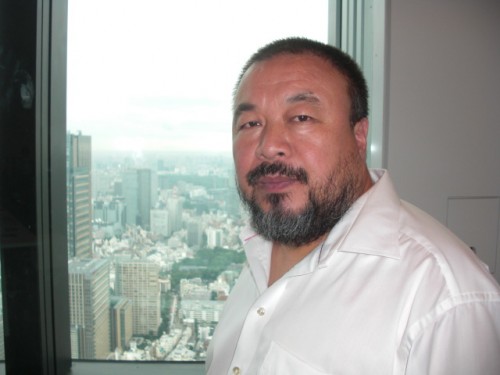
Presenting one topical work after another at international shows, designing the ‘Bird’s Nest’ stadium for the Beijing Olympics, while on the other hand having his blog shut down by the authorities for his fierce criticism of the Games…Ai Weiwei, artist who is also architect and activist, visited Japan recently for a solo exhibition at the Mori Art Museum. We took the opportunity to quiz one of the leading figures in Chinese contemporary art on his views of art, the state, and life.
– Tell us about the background to the recent shutting down of your blog. [See endnotes, Ai Weiwei (part 1)]
By Chinese standards it should have been shut down a long, long time ago. It is the only Chinese blog so highly critical of Chinese policy. Normally the government would not allow a blog like that, but it survived for three years. And especially over the past year, and during the Olympics, I posted very strong criticism. I knew it was going to be shut down; it was just a matter of when. With every article I’d post, I’d think this will surely be my last.
A friend of mine set up a blog for me in the United States, which I tried, but I didn’t have the same passion. I mean, why write a blog for people in the United States? I write the blog because I want the Chinese to read it. Anyway, the Chinese government shut down that blog too. So we changed to another address, and then that was shut down. It’s been shut down four or five times already.
But if I want to have an effect, I believe I have to be in China. I have to be there and take the consequences, including those that harm me. Otherwise it is not fair. If you are an outsider people can say, “Well he has an American passport. He can preach this.” But I don’t have one. I’m Chinese and I’m facing the punishment handed down by the government and I am openly discussing it. It sets a strong example for young people in China: to take responsibility, to bear the possible damage. I think that is morally very important.
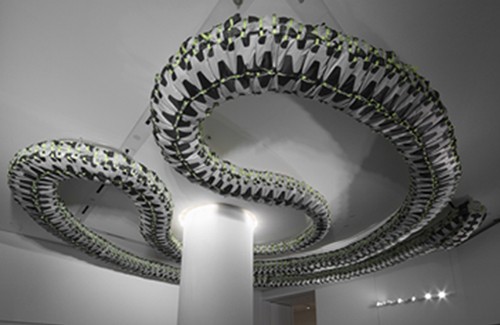
Snake Ceiling 2009
A serpentine row of students’ backpacks laid out as a requiem for the souls of the children who died in the 12 May 2008 Sichuan earthquake 40 × 900cm
Installation view at Ai Weiwei: According to What? Photo Watanabe Osamu, courtesy Mori Art Museum
Blog and Twitter both disrupted
– And Twitter?
Twitter was very nice – 140 words, a quick response to anything. But when it reached 7000 followers, the government started getting scared, because I was discussing all sorts of public issues, so they shut that down too. I changed the name ten times, but they were all shut down. With that other people using Twitter became very angry and they all started to use my name – names like Ai Weiweiwei or Weiweiwei Ai or Aiaiwei. There were forty or fifty blogs with my image and nobody knew what was going on, so the government blocked access from China to all of Twitter. Now we have nothing.
– And the readers of your blog, are they all art lovers?
At the very beginning they were art lovers and designers. Then as I became more political, it was journalists and editors that were jumping in to quote my opinion, especially foreign correspondents and journalists. It became a very important source for them.
– Your activities are dual: as an artist and as an activist…
To me they are one: I think an artist is an activist, and a good activist should be an artist. All my activities are one, as a man living in society and having my own opinions and ideals.
– Does that mean that all of your artworks contain a political message?
Yes. They cannot be separate. Separate would be incomplete.
– So staying in China and changing the system are at the forefront of your art practice?
Yes. I cannot change it myself of course. But I have to stay there and exercise my rights. Those rights are very fundamental to being an artist.
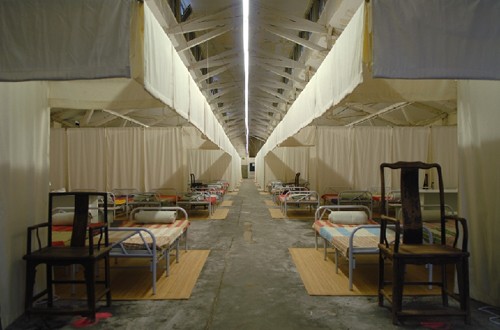
Fairytale 1001 Dormitory 2007
A tent factory converted into a dormitory to house the 1001 ordinary Chinese citizens the artist sent to Kassel as part of his Fairytale 1001 artwork for Documenta 12. The project focused on the individual experience of being Chinese. © FAKE Studio
It’s just art
– Contemporary art of course has its origins in Europe. In a globalized world, what is the meaning of practicing contemporary art as a non-Western artist?
Contemporary art does have a strong background of Western culture. But I think today that has started to change. It’s like when you are a child, you have to have your Mom’s breast, but once you grow up you don’t need it anymore.
Look at the situation in Japan, it has become a civil society, a society which is supporting of humanity. It has the language and traditions to recognize its own inner needs and to identify its own problems and struggles.
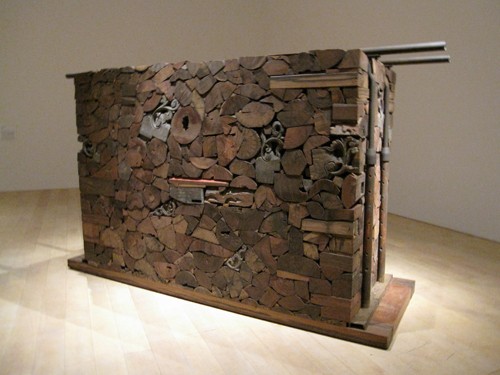
Kippe 2006
Tiele wood from dismantled QIng-dynasty temples, iron parallel bars 182 x 286 x 104 cm
– So you don’t think there is ‘Chinese art’ or ‘East Asian-specific art’?
There only is when it’s a problematic society, a society that has limitations. When we talk about such categories, we talk about limitations. But when we truly appreciate art, we don’t say this is women’s art or this is gay art; it’s just art. It’s something we all understand and that affects all of us.
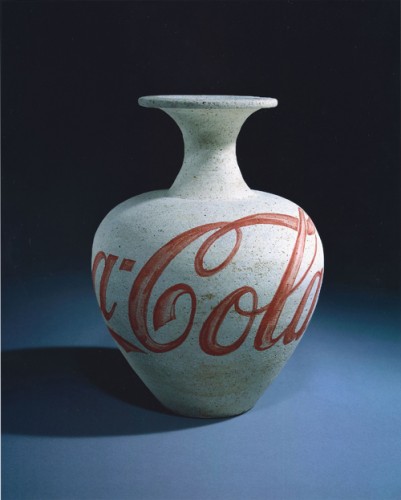
Coca Cola Vase 1997
Paint on Tang-Dynasty (206BC-24AD) vase, 24 x d18 cm
© FAKE Studio
Ai Weiwei
Born 1957 in Beijing. Co-founded the avant-garde art group the Stars in 1978. Moved to New York in 1981, returning to Beijing in 1993. Since then, in parallel with his art practice, he has worked also as a curator, architect and critic. Major group shows include the Guangzhou Triennial (2002/05), 2006 Biennale of Sydney, and documenta12 (2007). Winner of the lifetime achievement award at the 2008 Chinese Contemporary Art Awards. He acted as a design consultant on the Beijing National Stadium (aka the ‘Bird’s Nest’) to Herzog & de Meuron, with whom he participated collaboratively in the 2008 Venice Biennale of Architecture. His solo show Ai Weiwei: According to What? is underway at the Mori Art Museum (Tokyo) through 8 November. His next solo show, So Sorry, will be held at Haus der Kunst in Munich from 12 October – 17 January.
ART iT Picks: Ai Weiwei: According to What?
https://www.art-it.asia/en/u/admin_exrec_e/GREuYPCaqHt2Wc5KAkUf/
ART iT Snapshots
https://www.art-it.asia/en/u/admin_expht_e/pu5ZdhIYqxSHK1NjEQzw/
ART iT Archive: Issue 21 – Interview with Ai Weiwei (p.58-69; registered users only)
https://www.art-it.asia/fpage/?OP=mag
